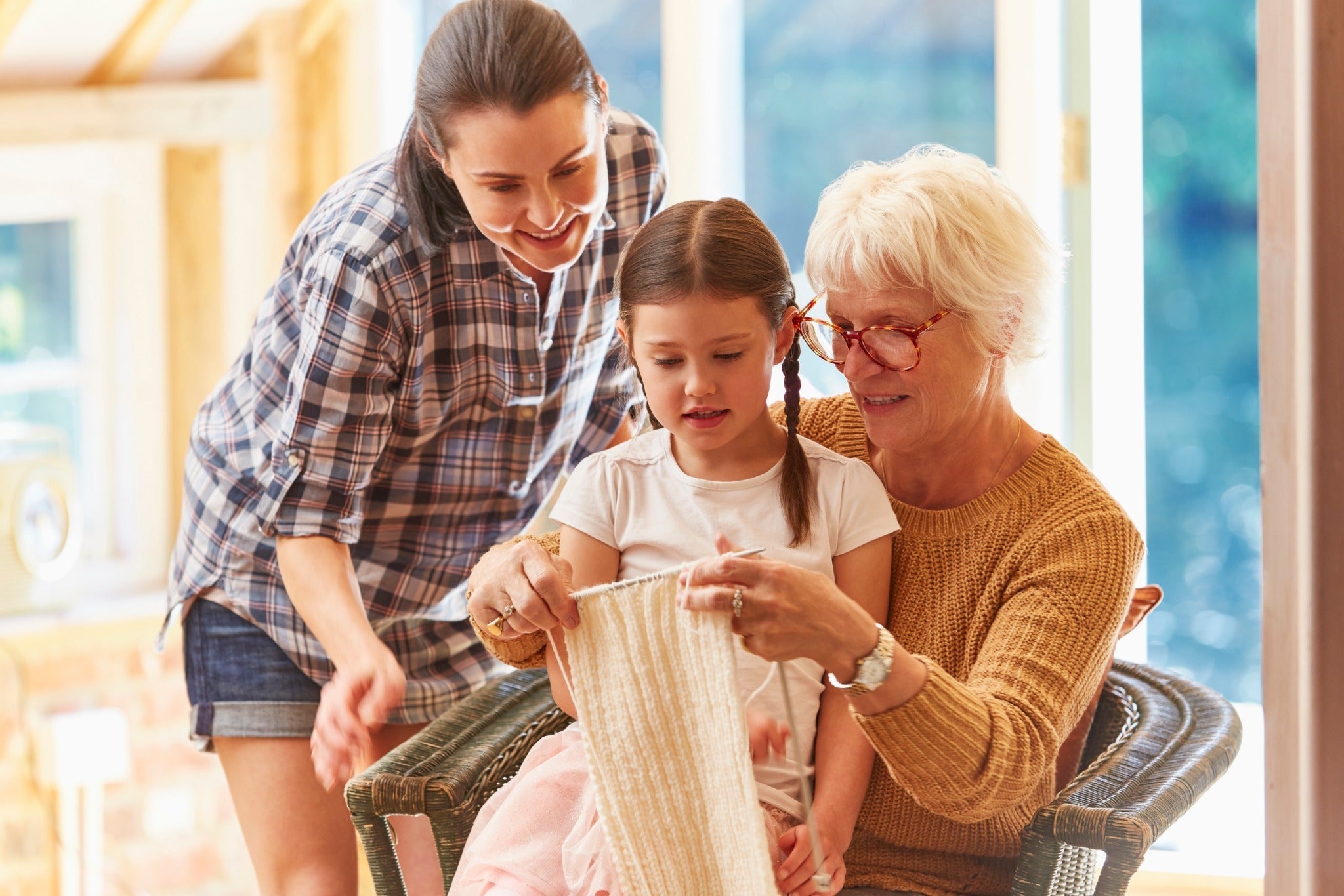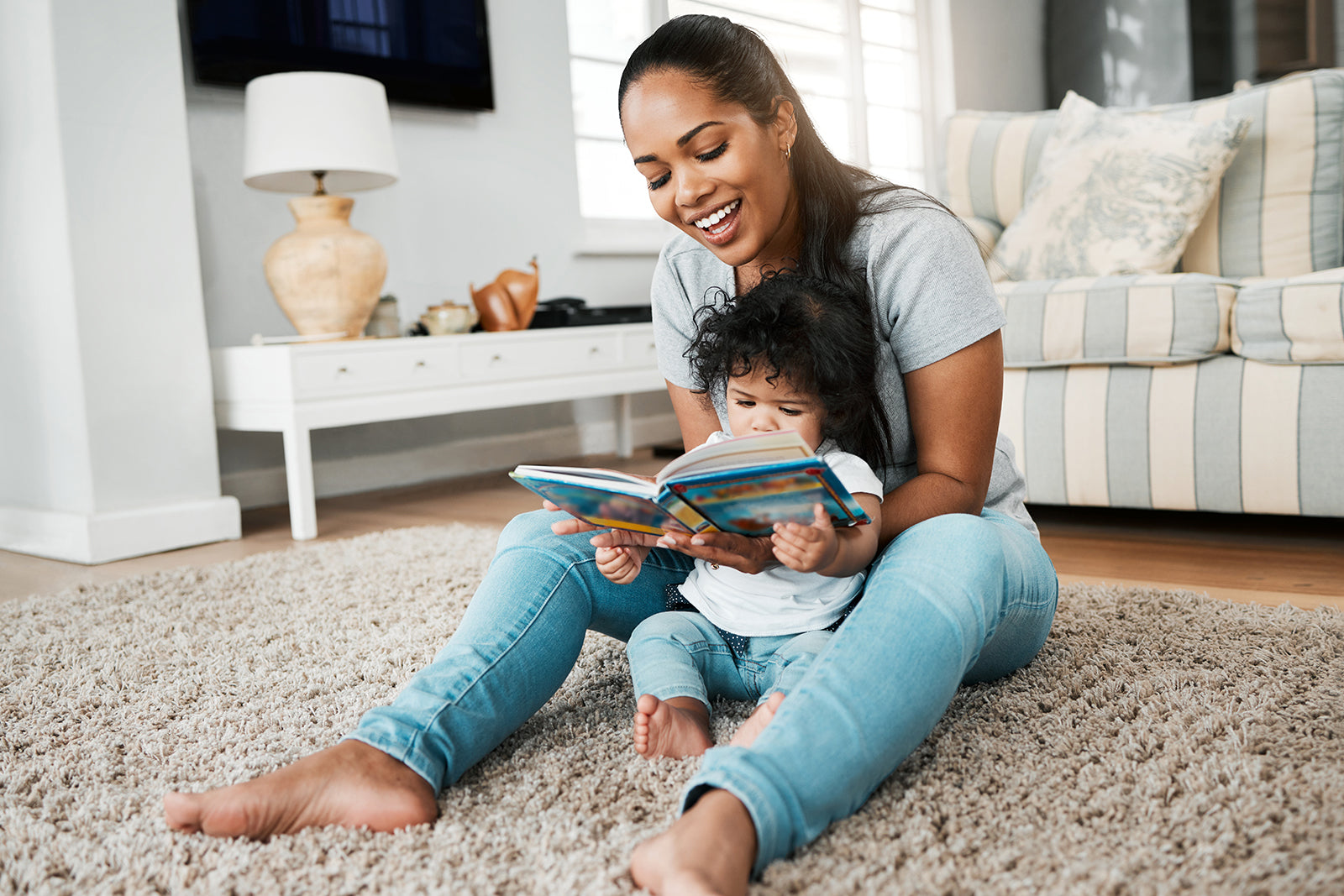Top 6 Multigenerational Living Benefits

Multigenerational living has seen a huge increase in the past ten years. The number of people living in a home with three or more generations has nearly quadrupled. There are significant benefits to this shared living arrangement which helps account for its surge in popularity.
At the bökee, we support and celebrate every family. We designed this unique product with new parents in mind since that was the stage we were in at the time. Now, we realize how helpful it is for anyone who needs a spare hand. Parents, grandparents, and children in multigenerational homes can all benefit from the bökee. Pick your favorite colors today!
What Counts as Multigenerational Living?
Most researchers consider the following household setups to be multigenerational:
- At Least Two Generations of Adults: This includes a grandparent/parent/child dynamic. It also counts parents living with their adult children, even if grandchildren are not part of the home.
- Grandparents Raising Grandchildren: This arrangement includes grandparents who live with and are responsible for non-adult grandchildren. It often goes by the name “grandfamilies."
A three-generation household is the most common extended family living situation. Occasionally, there may be a four-generation home, especially as people live longer.
Everything Old Is New Again

Multiple generations living in one house was a typical situation in the United States until World War II. In 1940, nearly one-fourth of the US population lived in a multigenerational home. After the war, this number began to drop significantly. By 1980, only about 12% of Americans lived this way. The numbers went up a bit, hovering in the 15%-16% range for several decades.
And then COVID-19 arrived.
As the world shifted and pivoted so fast our global heads were spinning, families had to make adjustments quickly. Parents moved in with adult children and vice versa at escalating rates. For some families, combining households happened out of necessity without much time to process the plan. For others, the decision was very intentional and designed for the long term.
Regardless of the reasons, the US has now surpassed its pre-WWII numbers. About 26% of Americans lived with multiple generations in one home in 2021. That number is likely still rising.
Top Benefits of Multigenerational Living
With these numbers going up and staying up, there must be something great about having extended family under one roof. Here is a look at the top six reasons families choose this arrangement.
1. Share Housing Expenses

It’s no secret that the housing market is a little insane all around the country right now. The pandemic saw a massive increase in demand with very little supply. In many major markets, it’s nearly impossible for young couples or families to buy a home because the prices have skyrocketed.
By choosing a multi-gen living situation, families can share that burden. Instead of using one or two incomes to support a household, they may have three or even four incomes. Sharing the mortgage, insurance, and utilities in this way makes homeownership within reach and can make it possible to buy a bigger property.
One Washington State family who took the plunge has thoroughly enjoyed having multiple generations under one roof. Stephanie Collazo, along with her husband and their two sons, joined households with Stephanie’s mom in 2020. She shares, “The financial benefits of combining homes have been wonderful. With the rising prices of everything, we don’t have to take that burden alone.”
2. Lower Other Costs
As your household grows, the cost-per-person for food and other items often decreases. Combining homes with multiple generations can mean that families can pursue more cost-saving measures such as buying food in bulk.

Another significant financial saving may be available for families with infants and toddlers. If retired grandparents in the home can care for the little ones, working parents can reduce or eliminate daycare costs.
3. Allow Older Generation To Retire
Many retirement-age people cannot financially afford to stop working. But if they combine homes with their children and grandchildren, retirement may become a viable option more quickly.
Sharing more of her family’s story, Stephanie Collazo notes, “My mom was working full-time and looking forward to retirement, but not sure of the financial means to get there.” After the families merged households, Collazo’s mom was able to retire.
4. Share Household Responsibilities
Running a home is practically a full-time job. Families with young children and working parents often find it difficult to keep up with all of the chores. When multiple generations share a house, many hands can make light work. And with more adults in the home, there may be more skills available for different tasks, too
5. Create Stronger Relationships
Multigenerational living offers a unique chance to build family relationships. In many situations, the household can include grandparents, parents, children, in-laws, and siblings. All of these family connections can grow stronger through a shared home.

Children can connect to their family’s culture and history differently when an older generation is present in the home. In Collazo’s case, her mom was able to help homeschool the boys, adding a whole new perspective to their education.
Collazo said that joining households helped all of them move to a plant-based way of eating that has further strengthened their family bond and their health. In fact, Collazo’s mom helps her with her business, Clean Food Mama, which grew out of this lifestyle.
6. Provide Safety for Aging Parents
The so-called "sandwich generation" is the group of adults raising children and caring for aging parents. Multi-gen living makes this process much simpler so that those in the middle don’t feel so overwhelmed.
Combining generations under one roof helps aging parents avoid becoming isolated or lonely. And it can provide a safer way for them to age in place longer than they might if they were living alone.
Is Multigenerational Living Right For Your Family?

If you are thinking about joining households with parents or grandparents, there are many things to consider. Collazo notes, “When we combined households with my mom in 2020, we didn’t take this step lightly. But family is important to us, and I love that we are able to enhance our family bond by choosing this lifestyle.”
Here are some important things to keep in mind:
- This decision impacts everyone in the home. Have frank and open discussions with the whole group about the pros and cons. Even with so many benefits, multi-gen living has challenges, too.
- Be crystal clear about finances. Make sure all adults involved understand and agree to their financial responsibilities. It can even be good to put it in writing and have each adult sign off on the plan.
- Set parameters and boundaries around everyone’s time and space. For example, living with your retired parents doesn't mean you can assume you have a built-in babysitter whenever needed.
- If you have a spouse or partner, be intentional about spending one-on-one time with them. Also, be sure to provide space and time for your older relatives to have their own quiet time away from everyone else.
- Embrace flexibility and compromise. Families can navigate this new living arrangement with those two traits in place.
Families Come In All Sorts of Shapes and Sizes
Family dynamics can feel chaotic and overwhelming at times. But families are also beautiful and strong, no matter how they come together.
The bökee has family at its roots and core, and it’s an honor to support your family with our product. Designed as a one-handed bottle prep tool for parents of babies, the bökee is also helpful for aging individuals who have a loss of hand strength.
It lets older people or those with limited hand mobility open medicine bottles and other containers more easily. We’re thrilled that this tool can help so many people, and we invite you to choose a bökee for your family’s needs.




